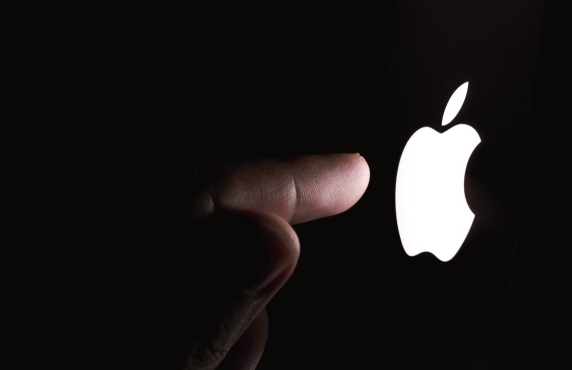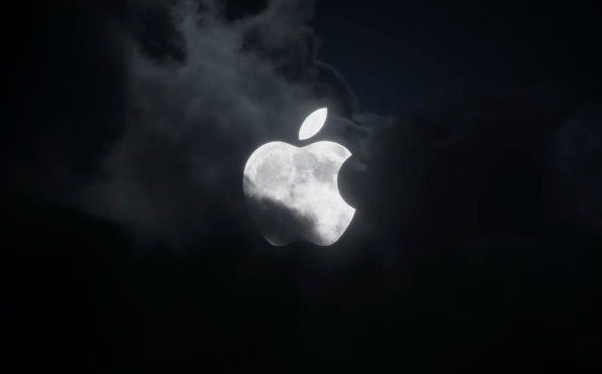How to fix a Mac that won't eject a disk on macOS
Try standard eject methods like dragging the disk to the Trash, using the eject key, right-clicking to eject, or using the Finder sidebar. 2. Use Disk Utility to select and eject the disk, or unmount it first if needed. 3. In Terminal, list volumes with "ls /Volumes" and eject using "diskutil eject /Volumes/DRIVE_NAME", escaping spaces as needed. 4. Restart the Mac and hold the mouse button or press the eject key during startup to eject optical discs. 5. Check for apps using the disk by closing Finder, Preview, or other programs, and use Activity Monitor or "lsof | grep DRIVE_NAME" in Terminal to identify and quit blocking processes. 6. Boot into Safe Mode by holding Shift during startup, then attempt to eject the disk. 7. For external drives, shut down the Mac, unplug the drive safely, then restart. 8. For optical drives only, use a paperclip in the emergency eject hole or run "drutil tray open" in Terminal if supported. Most ejection issues are caused by active processes or software glitches, so start with basic methods and progress to restarts or Safe Mode if necessary, ensuring the disk is eventually released safely.

When a Mac won’t eject a disk—whether it’s a physical CD/DVD, an external drive, or a mounted disk image—it can be frustrating, especially if you’re trying to shut down or unplug the drive. Here’s how to fix a Mac that won’t eject a disk, using several reliable methods.

1. Try the Standard Eject Methods First
Before diving into advanced fixes, make sure you’ve tried the basic approaches:
- Click and drag the disk icon to the Trash (the label changes to “Eject” when hovering).
- Press the eject key (⏏) on your keyboard, if available.
- Right-click the disk icon on the desktop or in Finder and select Eject.
- Use Finder: Go to the sidebar under Locations, find the drive, and click the Eject button next to it.
If the disk still won’t eject, move on to the next steps.

2. Force Eject Using Disk Utility
Disk Utility can often resolve stubborn disks.
- Open Disk Utility (you can find it via Spotlight or in Applications > Utilities).
- Locate the problematic disk in the left sidebar.
- Select it, then click the Eject button in the toolbar.
- If that doesn’t work, try unmounting first (click Unmount, then attempt to eject afterward).
Note: Unmounting makes the disk inaccessible but doesn’t physically eject it. After unmounting, you can usually eject it manually or via command.

3. Use the Terminal to Eject
Terminal gives you direct control over disk operations.
- Open Terminal (Applications > Utilities > Terminal).
- Type the following command to list all mounted volumes:
ls /Volumes
This shows the exact name of the disk.
- To eject, use:
diskutil eject /Volumes/DRIVE_NAME
Replace
DRIVE_NAMEwith the actual name (use backslashes to escape spaces, e.g.,My\ Disk).
If the disk is locked or in use, this command will tell you why. Close any apps that might be accessing files on the disk and try again.
4. Restart and Eject During Boot
If software methods fail, restart your Mac and eject the disk early in the boot process.
- Restart your Mac while holding down the mouse button or trackpad (for optical discs).
- This often forces a CD or DVD to eject during startup.
- Alternatively, press the eject key (⏏) as soon as you hear the startup chime (or immediately after pressing the power button on Apple Silicon Macs).
This method works especially well for stuck optical media.
5. Check for Apps Using the Disk
A file or app might be actively using the disk, preventing ejection.
- Try closing all open apps, especially:
- Finder windows showing files from the drive
- Preview (if a file from the disk is open)
- Terminal, Photoshop, or other apps that might have loaded content
- Use Activity Monitor:
- Open Activity Monitor.
- Search for the disk name or related processes.
- Quit any processes using the disk.
You can also use Terminal to see what’s accessing the disk:
lsof | grep "DRIVE_NAME"
This lists processes using the drive. Close or force quit them if safe.
6. Boot into Safe Mode
Safe Mode performs a disk check and loads only essential kernel extensions, which can help release a stuck disk.
- Shut down your Mac.
- Turn it on and immediately hold down Shift until you see the login screen.
- Once in Safe Mode, try ejecting the disk again via Finder or Terminal.
- Restart normally afterward.
7. For External Drives: Unplug Safely After Shutdown
If it’s an external drive that won’t eject and you’ve confirmed no data is being written:
- Save all work and quit apps.
- Shut down your Mac.
- Once powered off, unplug the drive.
- Turn the Mac back on.
This avoids file system corruption, as the system isn’t actively using the drive.
⚠️ Only do this if necessary—always try to eject properly first.
8. Physical Ejection (Optical Drives Only)
If you have an older Mac with a slot-loading optical drive and a disc is stuck:
- Turn off the Mac.
- Use a paperclip in the emergency eject hole (if present).
- Some Macs support
drutilcommands in Terminal:drutil tray open
Note: drutil is deprecated on newer macOS versions and only works with optical drives.
Basically, most disk ejection issues come down to an app using the drive or a software glitch. Start simple, use Disk Utility or Terminal, and restart if needed. With a little patience, the disk should come free.
The above is the detailed content of How to fix a Mac that won't eject a disk on macOS. For more information, please follow other related articles on the PHP Chinese website!

Hot AI Tools

Undress AI Tool
Undress images for free

Undresser.AI Undress
AI-powered app for creating realistic nude photos

AI Clothes Remover
Online AI tool for removing clothes from photos.

Clothoff.io
AI clothes remover

Video Face Swap
Swap faces in any video effortlessly with our completely free AI face swap tool!

Hot Article

Hot Tools

Notepad++7.3.1
Easy-to-use and free code editor

SublimeText3 Chinese version
Chinese version, very easy to use

Zend Studio 13.0.1
Powerful PHP integrated development environment

Dreamweaver CS6
Visual web development tools

SublimeText3 Mac version
God-level code editing software (SublimeText3)
 Will Bitcoin peak in September? How should investors deal with it? Analysis of one article
Aug 26, 2025 pm 05:12 PM
Will Bitcoin peak in September? How should investors deal with it? Analysis of one article
Aug 26, 2025 pm 05:12 PM
On-chain and market indicators: The approximation of the risk range determines whether Bitcoin is close to the top. On-chain data and market structure provide the signal closest to actual trading behavior. Many key indicators currently show that the market has entered the "potential risk range". MVRV indicators enter the "mild danger zone". According to Cointelegraph, Santiment's latest data shows that Bitcoin's MVRV (market value to realization value ratio) has reached 21%. This indicator reflects the overall investor profit and loss status. Historical experience shows that when MVRV is in the range of 15%-25%, the market enters a "mild danger zone", which means that a large number of coin holders are already in a profitable state and their motivation to take profits is enhanced. Although it does not constitute an immediate selling signal, the price has been short
 What is Buy the dip? How to judge the bottom of the game? A detailed explanation of this article
Aug 26, 2025 pm 04:57 PM
What is Buy the dip? How to judge the bottom of the game? A detailed explanation of this article
Aug 26, 2025 pm 04:57 PM
What is bottom-buying? Buying the bottom, as the name suggests, refers to buying when the asset price experiences a sharp decline or approaches a temporary low, and expecting profits to be achieved when the price rebounds in the future. Since the market is often accompanied by panic selling during the decline, you can obtain assets at a lower cost when entering the market. As the saying goes, "Others are afraid of me, I am greedy." Therefore, before implementing the bottom-buying strategy, investors must be clear about their own operating logic and avoid falling into the dilemma of "others lose small losses and I lose huge losses." In English, there are usually two ways to express bottom-fishing: BottomFishing: a formal term, literally translated as "fishing at the bottom of the water", which means buying in an undervalued area. Buythedip: A more colloquial statement, commonly found on social media and news reports, meaning "buy while the price falls." in short
 How to turn on the firewall on Mac
Aug 22, 2025 pm 04:01 PM
How to turn on the firewall on Mac
Aug 22, 2025 pm 04:01 PM
OpenSystemSettings(orSystemPreferences)byclickingtheApplemenu,thenselectSystemSettings(Venturaandlater)orSystemPreferences(olderversions).2.OnmacOSVenturaandlater,gotoNetwork>Firewallinthesidebar;onMontereyandearlier,openSecurity&Privacy>Fi
 What is a pass key? How to create it? OEE Exchange's pass key tutorial ((APP/Web)
Aug 29, 2025 pm 03:54 PM
What is a pass key? How to create it? OEE Exchange's pass key tutorial ((APP/Web)
Aug 29, 2025 pm 03:54 PM
What is Pass Key Pass Key is a new type of authentication technology that allows users to access their accounts without manually entering their password when logging into a website or application. Through the pass key, users can complete identity authentication using fingerprint recognition, facial scanning or device unlocking methods (such as PIN code). This technology is based on the encryption key pair mechanism, providing efficient and secure protection capabilities, and effectively resisting cyber threats such as phishing attacks. Advantages of Pass Key 1. Password-free login, which is more convenient to operate: use fingerprints, faces and other biometric methods to log in directly to the account, so as to save the hassle of repeatedly entering passwords and avoid login failures caused by entering the wrong password. 2. Stronger security: Pass keys follow technical standards formulated by the FIDO Alliance and W3C, and use asymmetric encryption algorithms to replace traditional secrets.
 What is Mango Network (MGO Coin)? MGO's future development and price forecast
Sep 02, 2025 pm 08:57 PM
What is Mango Network (MGO Coin)? MGO's future development and price forecast
Sep 02, 2025 pm 08:57 PM
Directory What is MangoNetwork (MGO Token)? Technical advantages (1) Excellent performance (2) Main features of safe and reliable MangoNetwork 1. Parallel execution architecture of multiple virtual machines 2. Advanced cross-chain communication 3. High-performance consensus mechanism 4. Enhanced security through the Move language 5. Modular blockchain design How MangoNetwork operates MGO token Economics Token allocation details: Unlocking and release timetable: MangoNetwork Roadmap and Future Development MangoNetwork Price Forecast MangoNetwork 20
 Ethereum price forecast for September
Aug 26, 2025 pm 03:57 PM
Ethereum price forecast for September
Aug 26, 2025 pm 03:57 PM
Ethereum's September trend will be dominated by the game between spot ETF expectations and the "September effect". Historical data shows seasonal weakness, but ETF progress may become a key catalyst. With the intensification of price volatility, investors should focus on risk management and fundamental logic rather than single price prediction.
 BNB Certification Service (BAS Coin) 2025–2030 Price Forecast: How much will the price reach in the future?
Sep 02, 2025 pm 07:00 PM
BNB Certification Service (BAS Coin) 2025–2030 Price Forecast: How much will the price reach in the future?
Sep 02, 2025 pm 07:00 PM
Table of Contents What is the latest news and updates of BAS coins? What is BAS coin introduced by the BNB certification service development team? BAS Token Economics BNB Certification Service (BAS) Price Forecast 2025–2030BNB Certification Service (BAS) Price Forecast Bollinger Bands and Momentum Indicators BNB Certification Service (BAS) Price Forecast 2025–2030BNB Certification Service (BAS) Price Forecast 2026 Price Forecast BNB Certification Service (BAS) Price Forecast
 How to change the default browser on a Mac?
Aug 15, 2025 am 04:21 AM
How to change the default browser on a Mac?
Aug 15, 2025 am 04:21 AM
OpenSystemSettingsbyclickingtheApplelogoandselectingSystemSettings(orSystemPreferencesonoldermacOSversions).2.NavigatetoDesktop&ScreenSaverinnewermacOSversions(Venturaandlater)orGeneralinolderversions(Montereyandearlier),thenselectDefaultWebBrows








